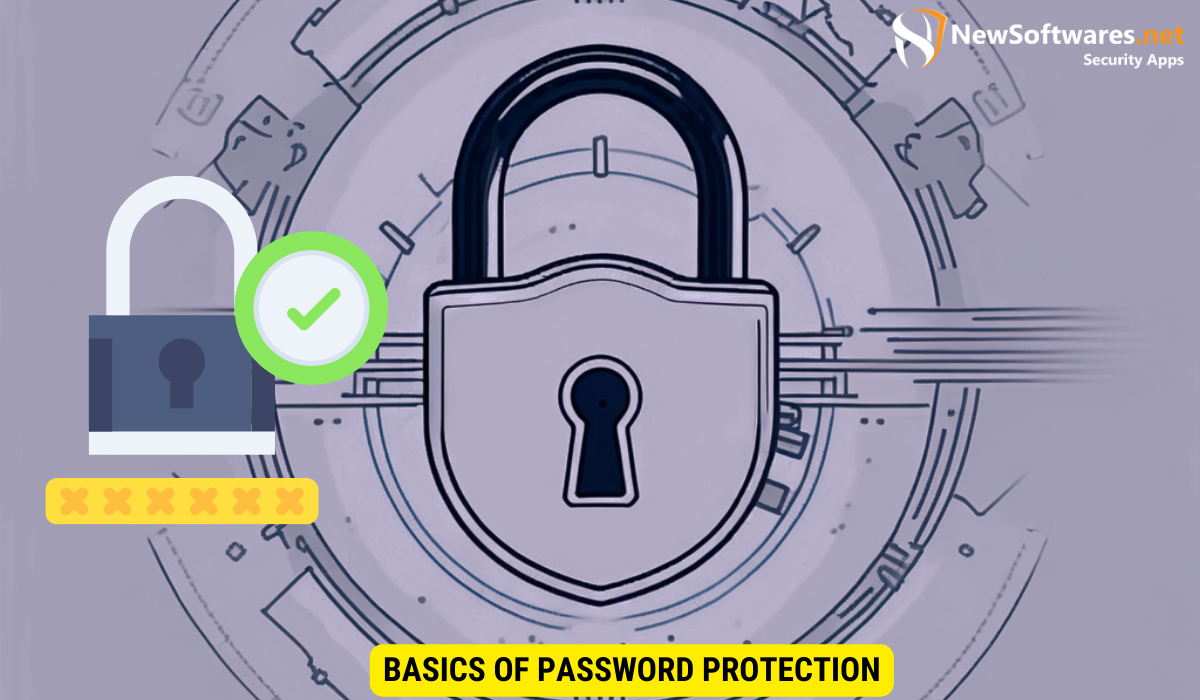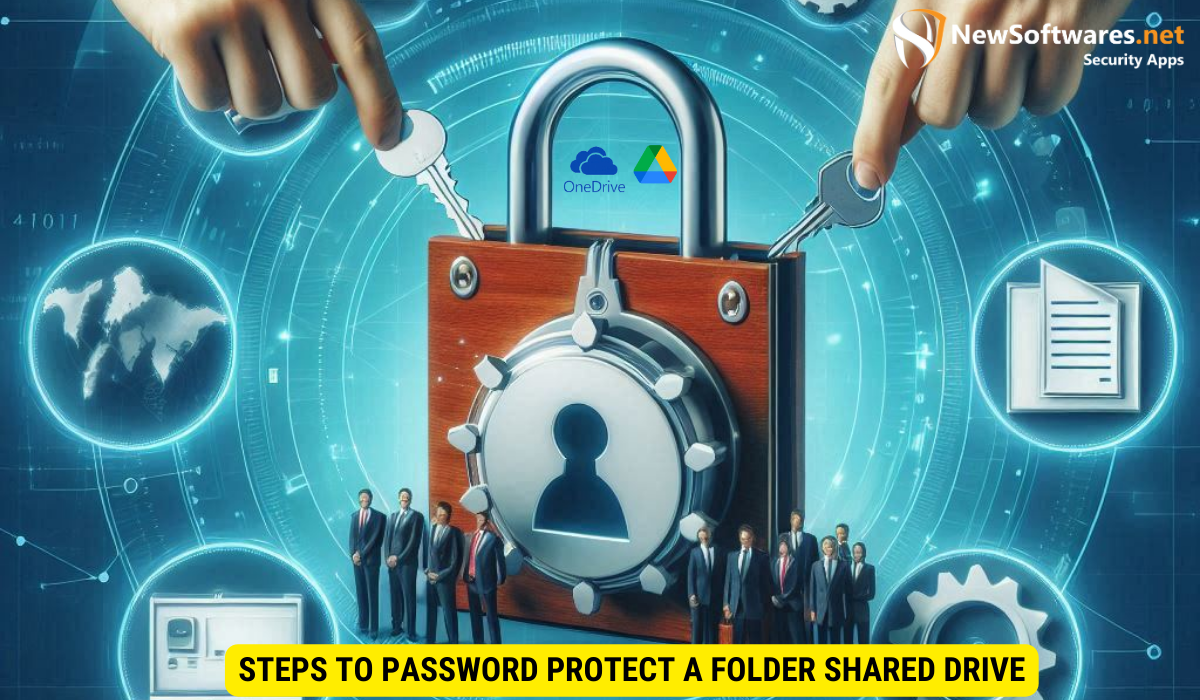To password protect a folder on a shared drive, follow these steps:
-
Encrypt the Folder:
- Right-click on the folder you want to protect and select “Properties.”
- In the Properties window, go to the “General” tab and click on “Advanced…”
- Check the box labeled “Encrypt contents to secure data” and click “OK.”
- Click “Apply” and choose whether to encrypt just the folder or the folder and its contents.
-
Use Third-Party Software:
-
Download and install software like 7-Zip, WinRAR, or similar.
-
Right-click on the folder and select the software option (e.g., “Add to archive” in WinRAR).
-
In the archive options, look for the password setting and enter a strong password.
-
Save the archive to the shared drive.
-
In today’s digital age, the security of our sensitive files and documents has become more crucial than ever. Whether it’s personal information, financial records, or confidential business data, protecting our files from unauthorized access is essential. One effective way to ensure the security of your files is by password protecting a folder on a shared drive. I will discuss the importance of password protection, the basics of password protection, the steps to password protect a folder, common mistakes to avoid, and tips for maintaining your password-protected folder.
Understanding the Importance of Password Protection
With the increasing number of cyber threats and data breaches, password protection plays a vital role in safeguarding our sensitive information. Passwords are like virtual keys that grant access to our files and folders. By implementing password protection, you create an additional layer of defense against unauthorized access and potential data breaches.
In addition to protecting individual files and folders, password protection is also crucial for securing online accounts and personal information. From social media profiles to online banking accounts, passwords are the first line of defense against cyber attacks. It is essential to use unique and complex passwords for each account to minimize the risk of unauthorized access.
The Role of Passwords in Data Security
Passwords act as gatekeepers, granting access only to those who possess the correct credentials. They protect our files and folders from unauthorized viewing, copying, or modifying. A strong password acts as a barrier, making it difficult for hackers or unauthorized users to gain access to your sensitive information.
Furthermore, the importance of regularly updating passwords cannot be overstated. As cyber threats evolve, so should our security measures. Changing passwords periodically and using multi-factor authentication can significantly enhance the security of your accounts and data.
Why Shared Drives Need Extra Protection
Shared drives are often used in collaborative work environments where multiple users have access to the same files and folders. As such, it becomes even more crucial to password protect sensitive folders on shared drives. Adding a layer of password protection ensures that only authorized individuals can access those files, reducing the risk of unauthorized access or accidental deletion.
Moreover, implementing access controls and user permissions on shared drives can further enhance security. By defining who can view, edit, or delete specific files, organizations can maintain control over their data and prevent unauthorized changes. Regularly reviewing and updating access permissions is essential to ensure that only the right individuals have access to sensitive information.
Basics of Password Protection

Before diving into password protecting your folder, it’s important to understand the fundamentals of password protection.
Password protection is a crucial aspect of cybersecurity that helps safeguard sensitive information from unauthorized access. By setting up password protection, you create a digital lock that requires a specific key – the password – to unlock and access the protected files or accounts. This security measure is essential in today’s digital age where data privacy and confidentiality are paramount.
What is Password Protection?
Password protection is the practice of securing files, folders, or accounts by requiring the input of a unique password. A password acts as a barrier, ensuring that only authorized individuals can gain access.
Implementing password protection involves choosing a strong and complex password that is not easily guessable. It is recommended to use a combination of uppercase and lowercase letters, numbers, and special characters to enhance the security of your password. Additionally, regularly updating passwords and avoiding the reuse of the same password for multiple accounts are good practices to strengthen your overall password protection strategy.
Different Levels of Password Protection
There are various levels of password protection, ranging from simple passwords to more complex authentication methods. These levels include traditional passwords, biometric authentication, two-factor authentication, and more. The level of password protection you choose should depend on the sensitivity of your files and the potential risks involved.
Biometric authentication, such as fingerprint or facial recognition, adds an extra layer of security by verifying a person’s unique biological traits. Two-factor authentication requires not only a password but also a secondary form of verification, such as a code sent to a mobile device, further reducing the chances of unauthorized access. Understanding the different levels of password protection available can help you tailor your security measures to best suit your needs and protect your valuable information effectively.
Steps to Password Protect a Folder

Now that you understand the basics, let’s delve into the steps of password protecting a folder on a shared drive.
Preparing Your Folder for Password Protection
The first step is to locate the folder you wish to protect. Right-click on the folder and select “Properties.” In the Properties window, navigate to the “General” tab and click on the “Advanced” button. Check the box that says “Encrypt contents to secure data.” This will encrypt the folder and its contents, adding an additional layer of security.
Setting Up a Strong Password
After encrypting the folder, it’s time to set up a strong password. A strong password consists of a combination of uppercase and lowercase letters, numbers, and special characters. Avoid using common words or personal information that can be easily guessed. It’s important to create a unique password that you haven’t used elsewhere.
Confirming and Testing Your Password
Once you’ve set up a strong password, it’s crucial to confirm and test it. When prompted, enter your password and confirm it. Double-check for any typos or errors. After confirming, try accessing the folder using the password you just set. This will ensure that the password protection is working correctly.
Common Mistakes to Avoid When Password Protecting a Folder
While password protection is an effective security measure, there are several common mistakes to avoid to ensure its effectiveness.
Weak Password Selection
One of the most common mistakes is selecting weak passwords that are easily guessable. Avoid using simple passwords like “password123” or common phrases like your birthdate. Opt for longer, more complex passwords that are harder to crack.
Forgetting to Confirm Password Protection
Another common mistake is forgetting to confirm the password protection after setting it up. Always double-check and test the password to ensure that the folder is indeed password protected. Neglecting this step can leave your sensitive files vulnerable.
Maintaining Your Password-Protected Folder
Once you’ve password protected your folder, it’s essential to take steps to maintain its security over time.
Regularly Updating Your Password
Passwords should be updated periodically to enhance security. Set a reminder to change your password every few months or whenever there is a potential security breach. Avoid reusing passwords for multiple accounts.
What to Do If You Forget Your Password
In the unfortunate event that you forget your password, it’s important to have a plan in place. Consider keeping a secure backup of your password in a separate location, such as a password manager or a physical safe. Additionally, consult with IT professionals or follow the appropriate recovery procedures to regain access to your protected folder.
Key Takeaways
- Password protection is crucial for securing sensitive files and folders.
- Shared drives require additional protection due to multiple users accessing the same files.
- A strong password consists of a combination of uppercase and lowercase letters, numbers, and special characters.
- Regularly update your password for added security.
- Have a plan in place in case you forget your password.
FAQs
Can I password protect a folder on any shared drive?
Password protection is generally available on most shared drives. However, the specific steps may vary depending on the operating system or platform you are using. Consult the appropriate documentation or seek IT support for detailed instructions.
Is it necessary to encrypt the folder before adding password protection?
While encrypting the folder adds an extra layer of security, it is not mandatory. However, encryption enhances the protection of your files by encoding their contents, making them virtually unreadable without the correct decryption key.
Can I share a password protected folder with others?
Yes, you can share a password-protected folder with others. However, keep in mind that each recipient needs to know the correct password to access the folder. Share the password securely to ensure that only authorized individuals can access the protected files.
Is it possible to reset a forgotten password?
In most cases, if you forget your password, it cannot be easily reset. This is a security measure to prevent unauthorized access. It’s important to consult with IT professionals or follow the appropriate recovery procedures to regain access to your password-protected folder.
Can I use the same password for multiple folders or accounts?
It is generally not recommended to use the same password for multiple folders or accounts. If one password is compromised, all the associated folders or accounts become vulnerable. It’s best practice to use unique and strong passwords for each folder or account to maximize security.
Conclusion
Password protecting a folder on a shared drive is an effective way to safeguard your sensitive files and information. By understanding the importance of password protection, following the necessary steps, and avoiding common mistakes, you can enhance the security of your digital assets. Remember to regularly update your password and have a plan in case you forget it. Implement these practices to protect your valuable files from unauthorized access and potential breaches.
